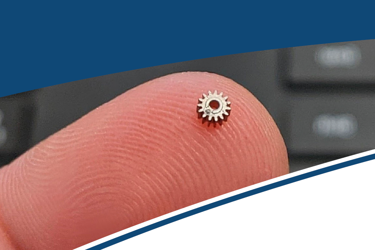Micro-MIM: 4 Best Practices For Precisely Making Micro Metal Parts
By Raghu Vadlamudi, Chief Research and Technology Director, Donatelle

As medical devices become smaller, weighing less than a few milligrams, medical device manufacturers are increasingly switching from machining to micro-metal injection molding (micro-MIM).
Think about parts like metal connectors in implantable pulse generators and gear pump components, as well as components for cardiac rhythm disease management, dental, ophthalmic, orthopedic, drug delivery, and the surgical ablation markets. Conventional machining cannot reliably maintain the extremely tight tolerances necessary to produce these components at high volumes with high quality. And, thanks to advances in technology, micro-MIM now can.
Even though the initial investment costs are higher relative to other manufacturing processes, micro-MIM offers better accuracy, consistency and cost advantages for mass manufacturing. However, taking full advantage of advanced micro-MIM capabilities to produce quality parts requires the following four critical areas or expertise.
Get unlimited access to:
Enter your credentials below to log in. Not yet a member of Med Device Online? Subscribe today.
